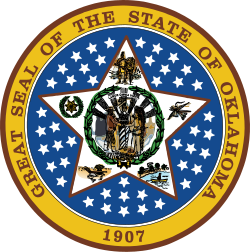Responsibilities
The ODOL is responsible for the administration and enforcement of the State's minimum wage law, enforces the State's child labor laws, oversees that State's workers’ compensation insurance compliance program, and investigates and mediates of unpaid wages disputes.
Additionally, the ODOL has jurisdiction for the inspection of welded steam lines, boiler and pressure vessels, elevators, amusement and water rides, and water heaters in public facilities. The Department is responsible for the certification of welders and weld-testing laboratories as well as the regulation and certification of asbestos workers. The ODOL is also the primary enforcement agency of occupational safety and health for public employees across the State.
History
In August 1907 delegates from the Twin-Territorial Federation of Labor, the State Farmers' Union, and the Railroad Brotherhoods met in Shawnee and formulated a list of 24 demands for the forthcoming constitutional convention. The 12th demand called for the establishment of State Department of Labor and Commerce.
Consequently, when the new state constitution was ratified by delegates to the constitutional convention in 1907 the Oklahoma Department of Labor was created. Since its inception, the Oklahoma Department of Labor has functioned continuously for more than 100 years under the direction of 18 different Commissioners and 22 governors.
Oklahoma's first Commissioner of Labor was Charles A. Daugherty, who served for two four-year terms from 1907 to 1915, under Governors C.N. Haskell and Lee Cruce. At that time, the Labor Department was located in Guthrie, as were all state agencies. The original staff consisted of five people: a commissioner; an assistant commissioner; a state factory inspector; a superintendent of the State Free Employment Bureau; and a stenographer.
Due largely to the infusion of federal funds from Wagner-Peyser and Social Security grants, the Oklahoma Employment Service and the Unemployment Compensation and Placement Division of the Oklahoma Department of Labor had grown to include more than 300 employees in 33 offices throughout the state by 1940. Federal grants accounted for 85 percent of the funds budgeted for these activities.
Then, in 1941, the 18th Legislature amended the Oklahoma Unemployment Compensation Law extensively, changing the name to the Oklahoma Security Act, and renamed administration of the Act from the Commissioner of Labor to the Oklahoma Employment Security Commission. By FY 1940-41, the Department of Labor had been reduced to 16 employees operating on only 11 percent of the previous year's budget.
Today the Department of Labor has an authorized staff of 86 with one office in Oklahoma City, Oklahoma. The present Commissioner of Labor is Lesie Orborn who was elected by the people in November 2018 and took office January 2019.
This page is based on this
Wikipedia article Text is available under the
CC BY-SA 4.0 license; additional terms may apply.
Images, videos and audio are available under their respective licenses.

